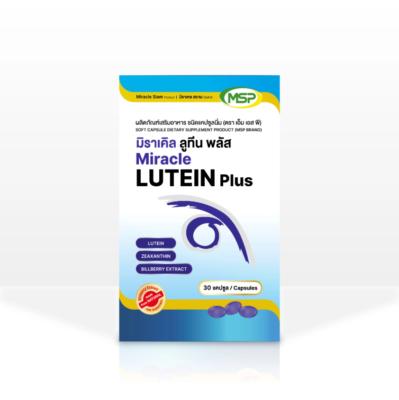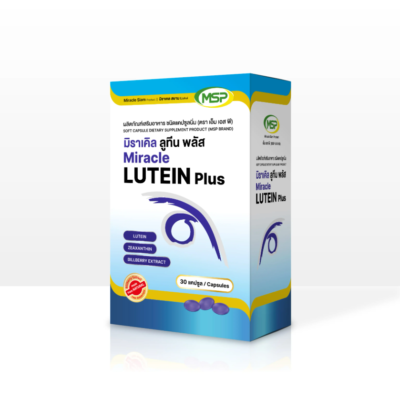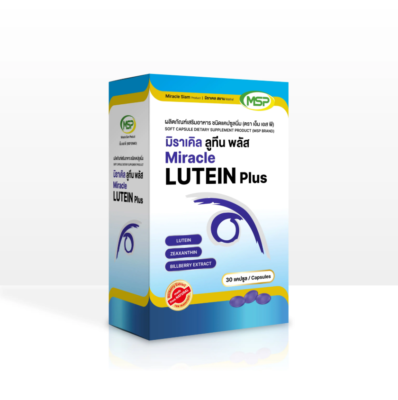Bilberry Extract
Bilberry contains a variety of phenolic compounds, including flavonols (quercetin, catechins), tannins, ellagitannins, and phenolic acids, but anthocyanins make by far the largest contribution to its phytochemical mix. Red, blue, and purple-colored flowers, fruits, and vegetables contain these naturally occurring phenolic compounds, which are redox-active antioxidants and iron chelators. In comparison to other berries including strawberry, cranberry, elderberry, sour cherry, and raspberry, bilberry has a higher anthocyanin content [1].
Anthocyanins are water-soluble polyphenols flavonoid compounds. The anthocyanin content of berries varies across species and also depends on environmental factors, such as the amount of solar radiation, temperature, and soil content of nitrogen and phosphorus.
Anthocyanins are primarily contained in the skin of berries, hence harvesting damage to the fruit skin reduces its anthocyanin content. Strong antioxidant properties are possessed by anthocyanins, and the antioxidant activity of plants is directly correlated with the pigment’s anthocyanin content. Besides their antioxidant properties, anthocyanins have also been shown to stabilize DNA, alter adipocyte gene expression, increase insulin secretion and sensitivity, and have antiapoptotic, anti-inflammatory, and antibacterial properties [1].

Health Effects of Bilberry
Ocular Effect
Ocular fatigue and ocular pain
Recently, people are increasingly using visual display terminal (VDT) devices like smartphones and tablets close to their eyes, which causes our eyes to work continually and is linked to ocular fatigue and pain. According to a study, consuming 240 mg of standardized bilberry extract once daily for 12 weeks helped to both suppress and relieve ocular fatigue in healthy persons with the condition.
Anthocyanin, a highly soluble antioxidant with a flavylium ion structure, is present in bilberry extract. It is found in the ocular tissues and suppresses various inflammatory factors in the body. Because anthocyanins may migrate and be distributed from the blood to the ciliary muscle, they have the potential to reduce and relieve ciliary muscle tension, which may lessen ocular fatigue [2].
Dry eye disease (DED)
Dry eye disease (DED) is a multifactorial disease of the tears and ocular surface that causes symptoms of discomfort, visual disturbance, and tear film instability as well as the possibility for ocular surface damage. It is accompanied by increased osmolarity of the tear film and inflammation of the ocular surface.
With a prevalence ranging from 5% to 35% at various ages, DED constitutes a prevalent clinical issue. Among several known risk factors, the use of VDT at work is believed to be one of the primary factors contributing to the development of dry eye [3].
Additionally, bilberry extract may alleviate with DED symptoms. Over a period of four weeks, subjects with DED who were supplemented with bilberry extract experienced an increase in the volume of tear secretion, as well as a significant improvement in biological antioxidant potential, and an increase in the modified BAP/diacron-reactive oxygen metabolites (d-ROMs) ratio, a marker of the overall balance between antioxidant potential and oxidative stress [4].

Anti-inflammatory Effect
Noncommunicable diseases like type 2 diabetes, cardiovascular disease (CVD), alzheimer’s disease, and cancer all originate and progress as a result of inflammation.
It can be either acute or chronic. Pro-inflammatory mediators and cytokines, such as nitric oxide (NO), interleukin-1β (IL-1β), prostaglandin E2 (PGE2), interleukin-6 (IL-6), and tumor necrosis factor-α (TNF-α), are frequently to responsible for the transition from an acute to a chronic inflammatory response, which results in chronic illnesses [5].
By modifying signaling pathways, lowering reactive oxygen species (ROS) levels, and downregulating the expression of pro-inflammatory factors (TNF-α, IL-1β, and IL-6) and enzymes (iNOS, COX-2), bilberry reduces inflammation in both cell and animal models. Clinical studies have revealed anti-inflammatory and antioxidant properties of bilberry fruit, juice, and powder.
Compared to water controls at 4 weeks, bilberry supplementation decreased the levels of nuclear factor-kappa B (NF-κB) targets such as circulating high-sensitivity C-reactive protein (hsCRP), IL-6, and gamma interferon (MIG), which were likely positively associated.
Furthermore, both in healthy volunteers and in patients with inflammation-associated chronic diseases, anti-inflammatory effects have been observed. However, human studies have been small and of short duration. Therefore, bilberry extract human trials involving a sizable population, a long duration study, and suitable follow-up are required [5].
Antioxidant Effect
Anthocyanins and ascorbic acid are found in bilberries, which give them a potent antioxidant capability. Anthocyanins can neutralize free radicals by donating electron(s) to the free radicals due to their powerful antioxidants. Anthocyanins have been reported to suppress lipid peroxidation. Bilberry extracts have been demonstrated to protect cells from oxidative damage induced by tert-butyl hydroperoxide, allyl alcohol, and UV light in in vitro tests. In neuroblastoma SH-SY5Y cells, lyophilized bilberry juice decreased ROS production and lipid peroxidation by upregulating the activity of the antioxidant enzymes catalase and superoxide dismutase [6].

Adverse Effects of Bilberry
Bilberries and bilberry extract have not been related to any known side effects in studies. Patients taking a chronic high dose of concentrated bilberry extract in combination with anti-platelet medications should be monitored for hemorrhagic disorders due to the bilberry’s anti-platelet effect. There are no documented medication interactions involving bilberry [6].
References
- Chu WK, Cheung SCM, Lau RAW, Benzie IFF. Bilberry (Vaccinium myrtillus L.). In: Benzie IFF, Wachtel-Galor S, editors. Herbal Medicine: Biomolecular and Clinical Aspects. 2nd ed. Boca Raton (FL). Available form: https://www.ncbi.nlm.nih.gov/books/NBK92770/
- Kosehira M, Machida N, Kitaichi N. A 12-Week-Long Intake of Bilberry Extract (Vaccinium myrtillus L.) Improved Objective Findings of Ciliary Muscle Contraction of the Eye: A Randomized, Double-Blind, Placebo-Controlled, Parallel-Group Comparison Trial. Nutrients. 2020 [cited 2023 July 20]; 12: 1-9. Available form: https://www.ncbi.nlm.nih.gov/pmc/articles/PMC7146147/
- Riva A, Togni S, Franceschi F, Kawada S, Inaba Y, Eggenhoffner R, Giacomelli L. The effect of a natural, standardized bilberry extract (Mirtoselect®) in dry eye: a randomized, double blinded, placebo-controlled trial. Eur Rev Med Pharmacol Sci. 2017 [cited 2023 July 20]; 21: 2518-25. Available form: https://www.europeanreview.org/article/12829
- Choo P, Woi P, Bastion M, Omar R, Mustapha M, Md Din N. Review of Evidence for the Usage of Antioxidants for Eye Aging. Biomed Research International. 2022 [cited 2023 July 20]; 2022. Available form: https://www.ncbi.nlm.nih.gov/pmc/articles/PMC9550496/
- Sharma A, Lee H. Anti-Inflammatory Activity of Bilberry (Vaccinium myrtillus L.). Current Issues in Molecular Biology. 2022 [cited 2023 July 21]; 44: 4570-83. Available form: https://www.ncbi.nlm.nih.gov/pmc/articles/PMC9601269/
- Chan S, Tomlinson B. Effects of Bilberry Supplementation on Metabolic and Cardiovascular Disease Risk. Molecules. 2020 [cited 2023 July 21]; 25: 1-15. Available form: https://www.ncbi.nlm.nih.gov/pmc/articles/PMC7180827/
- MIRACLE LUTEIN PLUS | MIRACLE SIAM PRODUCT https://msp-th.com/en/products/miracle-lutein-plus
- Nutrients for eye health | MIRACLE SIAM PRODUCT https://msp-th.com/en/articles/nutrients-for-eye-health

